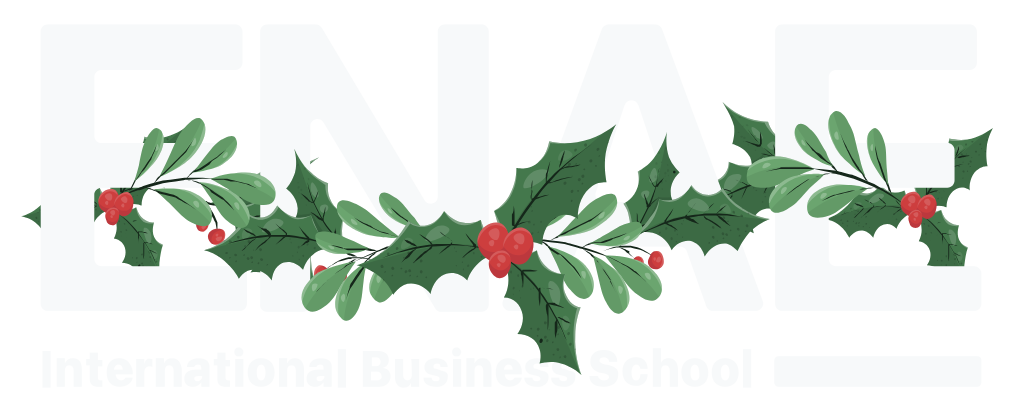SISTEMAS DE INFORMACION PARA LA CADENA DE SUMINISTRO

Este Curso en Sistemas de Información para la Cadena de Suministro te va a permitir principalmente mejorar dos aspectos en tu desempeño profesional: la toma de decisiones en cuanto a la selección e implantación de estos sistemas y la identificación de oportunidades de puesta en marcha de nuevos sistemas de información en la empresa.
Con esto, no solo vas a poder implantar y supervisar un sistema de información aplicado a la cadena de suministro, sino que serás capaz de aumentar la competitividad de la empresa diferenciándote del resto de compañías del sector. Dicho de otro modo, tendrás los conocimientos y las herramientas necesarios para establecer una estrategia en las relaciones corporativas.
Para ello, esta formación aborda la tecnología y el liderazgo como ventaja competitiva, ofreciendo las directrices para sacer cómo aprovechar ambos recursos en beneficio de la empresa.
Solicitud de información
Descubre los módulos y conceptos clave
Cada uno de los módulos de este curso ha sido elaborado rigurosamente atendiendo a las necesidades actuales y futuras tanto de los profesionales como de las empresas.
¡Explora todas las materias que conforman este curso!
INTRODUCCIÓN
MÓDULOS TRANSACCIONALES. ENTERPRISE RESOURCE PLANNING (ERP)
SISTEMAS DE INFORMACIÓN PARA LA PLANIFICACIÓN DE LA CADENA DE SUMINISTRO. SCP (SUPPLY CHAIN PLANNING)
SISTEMAS DE INFORMACIÓN PARA LA EJECUCIÓN DE LA CADENA DE SUMINISTRO. SCE (SUPPLY CHAIN EXECUTION)
SISTEMAS DE INFORMACIÓN PARA EL ANÁLISIS Y EL CONTROL DEL RENDIMIENTO
RELACIONES CON LOS SISTEMAS DE INFORMACIÓN DE LA CADENA SECUNDARIA O DE SOPORTE
GESDTIÓN DE PROYECTOS DE IMPLANTACIÓN DE SISTEMAS DE INFORMACIÓN PARA LA GESTIÓN DE LA CADENA DE SUMINISTRO
ESTADO DEL ARTE. COMPARATIVA DE PRODUCTOS COMERCIALES. NUEVAS TENDENCIAS (INDUSTRIAS 4.0)
Conoce a nuestros profesores
Abrimos la educación a una experiencia global y la adaptamos al futuro profesional que viene. Fórmate en un espacio interactivo y colaborativo, en contacto directo con profesores y alumnos.






Descripción
Los sistemas de información permiten a las empresas recopilar, procesar, almacenar y distribuir el conocimiento relevante para el desempeño de determinadas áreas. De esta forma, su aplicación a la cadena de suministro puede de gran utilidad en aspectos como los siguientes:
- Monitorizar y gestionar los niveles de inventario en tiempo real y, de esta forma, evitar excesos y faltantes de productos.
- Recopilar y analizar datos para prever la demanda futura con mayor precisión, lo que ayuda a optimizar la planificación de la producción y la adquisición de materiales.
- Planificar las rutas más eficientes para la distribución de productos, reduciendo los costos de transporte y los tiempos de entrega.
- Facilitar la comunicación y la colaboración entre todos los participantes de la cadena de suministro (proveedores, fabricantes, distribuidores…), lo que mejora la coordinación y la eficiencia en general.
- Rastrear el movimiento de productos a lo largo de toda la cadena de suministro, así se puede conseguir una mayor visibilidad y garantiza la trazabilidad de los productos desde su origen hasta su destino final.
A través de este Curso en Sistemas de Información en la Cadena de Suministro puede capacitarte para llevar a cabo estas tareas y multiplicar la eficiencia, la precisión y la respuesta de la cadena de suministro en tu empresa.

Objetivos
- Ampliar el conocimiento sobre los sistemas de información de gestión de la cadena de suministro y su integración con el resto de sistemas de información de la empresa.
- Mejorar la interlocución tecnológica con departamentos TI o proveedores de servicios.
- Capacitar la identificación de oportunidades tecnológicas y el liderazgo e impulso de proyectos TI orientados a la gestión de la cadena de suministro en las organizaciones.
- Profundizar en el conocimiento de la situación actual de la tecnología aplicable.

Metodología
ENAE desarrolla una metodología activa y participativa basada en el "Método del Caso", que alterna las exposiciones de conceptos, técnicas y métodos de análisis, con el desarrollo de casos prácticos que reflejan situaciones empresariales reales.
Con el fomento del trabajo en equipo se pretende conseguir la integración de todos los miembros y resolver de una forma más eficaz los casos planteados, mediante el intercambio de distintos puntos de vista, opiniones y experiencias. Se aprenderá de los formadores pero también de las experiencias profesionales de los compañeros.
Solicita
información




















